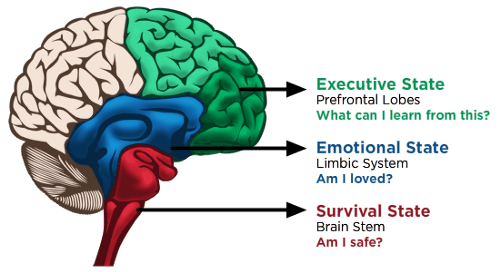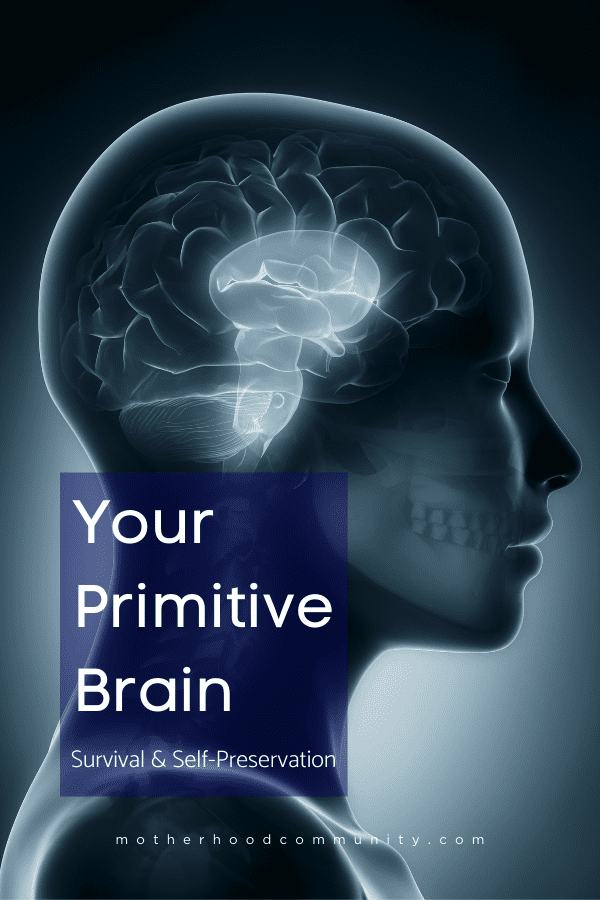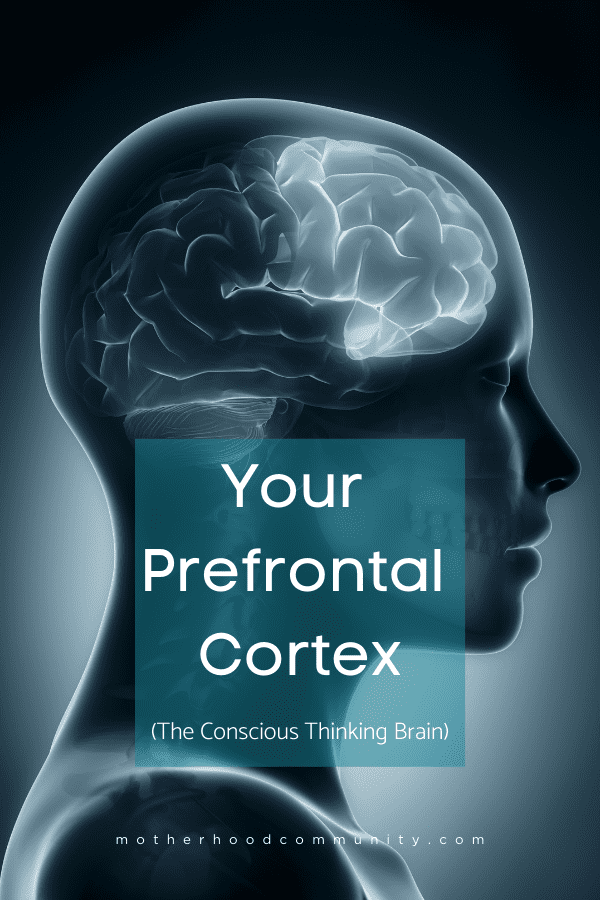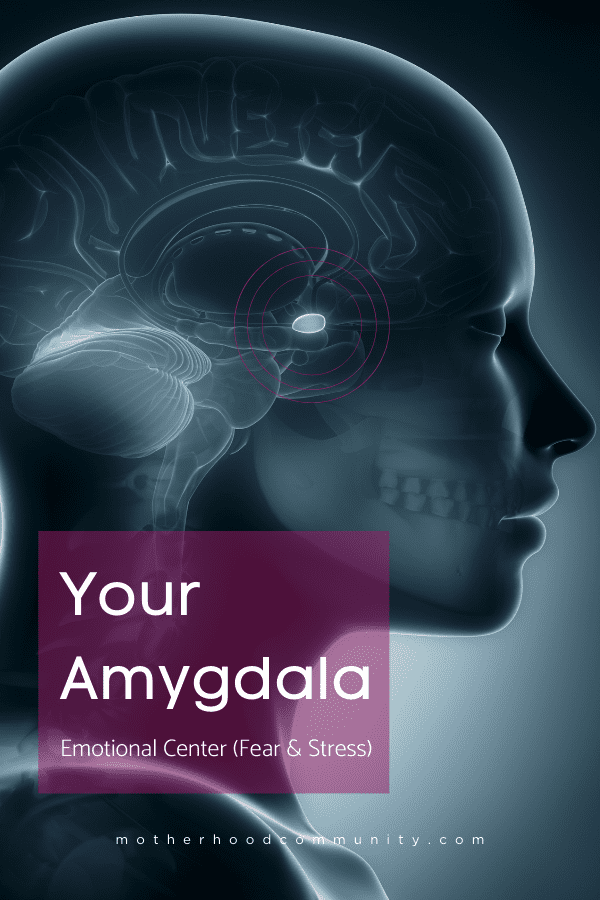– Antonio Damasio, neuroscientist
The human amygdala forms part of your limbic system (aka emotional brain).
This brain region oversees emotional responses and emotional states such as fear, anger, pleasure. It’s also associated with drives for hunger, sex, nurturing, and competition. If you’re a mom or future mom, you face an even more uphill battle to gain control over an overactive amygdala leading to unwanted symptoms. It might be due to:
Sleep deprivation Little time for yourself or self-care Possible hormonal or adrenal imbalance Increased demands and responsibilities to secure your children’s well-being The pressure to perform at work while maintaining your home duties
It might help to understand the mechanisms that drive your reactions and emotional patterns.
By understanding how your mind works, you gain better knowledge about the prevention and management of mood swings and impulsivity.
Keep reading to discover three scientifically-proven ways of overactive amygdala prevention significantly.
The Triune Brain Model & Your Emotional States
There are three distinct brain systems or brain structures inside your head:
1- The Primitive Brain: Am I Safe?
The primitive brain is the oldest, most ancient part of our brain. It’s located in the innermost part, known as the brain stem. This brain oversees our most basic survival functions such as heart rate and blood pressure, and breathing. The affirmation of this brain’s consciousness is: ‘Stay alive’ for the sake of self-preservation.
2- The Emotional Brain: Am I loved?
Located in the middle part of the brain called the limbic system. This instinctual brain oversees the fear and stress responses and our emotional memories and sense of smell. This is where your amygdala resides. The role of the amygdala is to keep you safe and secure. The affirmation of this brain’s consciousness is: ‘Avoid pain, seek pleasure.’’
3- The Thinking Brain: What do I think about this?
Located in the outermost part of the brain called the neocortex. The neocortex is the newest, most recent part of the brain to form. This brain system allows our prefrontal cortex to experience ‘metacognition’ or ‘thinking about thinking.’ It’s what allows us to move beyond knee-jerk impulses to experience imagination, inspiration, and creativity.
Meet Your Amygdala: Your High-Alert Alarm System
The amygdala (aka amygdaloid) has an almond-shape and is a bundle of neural circuits located deep in the brain’s temporal lobe. Strong emotional experiences become your body’s emotional history. These emotional histories will condition how you feel and react to situations now. You can be operating like a split-screen, your rational or conceptual mind saying one thing and your feelings another because of stored emotional histories. – Doc Childre & Deborah Rozman, Transforming Anxiety: The HeartMath Solution for Overcoming Fear & Worry & Creating Serenity Amygdala function is related to emotional learning, memory systems (how your brain processes and stores memories), decision making, and pleasure/fear responses. (1) According to brain scans and neuroimage fMRI studies (functional magnetic resonance imaging), amygdala activity is also present in response to emotional facial expressions. (2) Think of your amygdala as your very own built-in alarm system that will go off whenever it perceives a threat or potentially painful situation. It plays an important role in “defending” and keeping you safe and in your comfort zone. Your amygdala scans your environment regularly. When you experience a negative emotion, its response is to sound the alarm to alert your hypothalamus. Your hypothalamus is also a part of your limbic system. It acts like a command center that communicates with the rest of your body through your nervous system. The hypothalamus is involved in the first stages of the stress response (aka fight or flight response). According to neurobiology, the size of your amygdala matters – the larger it is, the more likely you’ll exhibit impulsive, anxious, or aggressive behavior. (3) Excessive amygdala activity is connected to post-traumatic stress disorder (PTSD) and anxiety disorders because it causes extreme reactions to emotional events, memories, emotional stimuli, and visual stimuli. Risk-taking is also associated with the amygdala. Amygdala damage such as from a traumatic brain injury or illness can impact your decision-making, so you’ll be more likely to take bigger risks with smaller potential gains. (4) (5) The amygdala also keeps you stuck in the past. It influences fear conditioning and emotional memory. (6) An overactive amygdala will lead to a state of chronic fear-based reactions and the constant subconscious activation of your emotional memory bank. (7) Like a pavlovian dog, this conditions you to keep reacting in the same old ways and repeating the same old patterns. (A recipe for feeling frustrated, stuck, and overwhelmed, right?) The amygdala also surprisingly influences whether you get turned on or not. It’s directly related to your emotional arousal, and believe it or not, and it’s been found that when a male is castrated (yikes), it shrinks by more than 30%! (3)
A Summary of How Your Amygdala Influences Your Life:
The amygdala’s role is to regulate the fear response. (8) Its purpose is to protect you and keep you safe. It eavesdrops on your environment via incoming information from your senses. (It receives information before the thinking brain does!) It’s responsible for the physical effects, unwanted symptoms, and overall experience of stress, anxiety, trauma, and fear (i.e., beating heart, sweaty palms, hot flashes, short breaths, stress hormones). It’s a ‘short cut’ and operates much faster than the thinking brain. It creates emotional and physical reactions in a fraction of a second. It acts as an alarm system that detects potential danger. It mostly operates from unconscious memory, which is why you experience those knee-jerk reactions faster than you can control them. It’s connected to the Sympathetic Nervous System (SNS) and the “Fight or Flight” stress response) (9) The amygdala can hijack other brain processes. According to neuroscientist Joseph Ledoux, there are way more neural connections from the amygdala to the cortex (thinking brain) than vice versa (40). This is why we have trouble acting rationally when the amygdala is overactive.
3 Proven Ways To Quiet The Amygdala & Increase Positive Emotions:
1 – Regular mindfulness meditation:
Harvard neuroscientist Sara Lazar, Ph.D., runs a research lab to study the effects of meditation, mindfulness, and yoga on the brain. Her team has conducted numerous tests involving neuroimaging (brain scans) to measure and track the mindfulness-based changes that happen in the brain. She says: “Our results suggest that meditation can produce experience-based structural alterations in the brain. We also found evidence that meditation may slow down the age-related atrophy of certain areas of the brain.” (10) They found that as little as eight weeks of consistent mindfulness practice is enough to tame and shrink your amygdala. What’s more, Lazar’s research shows that amygdala taming correlates with changes in stress: “The more stress reduction people reported, the smaller the amygdala got.” (11)
2 – Deep belly breathing:
Studies show slow, deep, diaphragmatic breathing (belly breathing) can calm the amygdala down. (12) Correct breathing technique is necessary to reap the full benefits of this simple, yet effective practice. The trick is to slow down your breath rate in order to lower your heart rate. Try adopting a daily breathwork practice and start out small. Five minutes a day is all you need to begin taming your overly loud emotional brain. (Bonus points for doing it first thing in the morning!) Starting a breathing meditation practice is easier than you think. 🙂
3 – Chanting:
Believe it or not, chanting helps calm the emotional brain too. One study using functional Magnetic Resonance Imaging (fMRI) to scan the brains of subjects chanting found that it also significantly deactivates the amygdala. (48) REFERENCES : (1) Neuron. 2005 Oct 20;48(2):175-87. Contributions of the amygdala to emotion processing: from animal models to human behavior. Phelps EA(1), LeDoux JE. (2) https://www.jneurosci.org/content/26/35/8915 (3)Amygdala response – https://www.sciencedaily.com/terms/amygdala.htm (4) aversive – https://www.scientificamerican.com/article/amygdala-loss-aversion/ (5) Panic Anxiety in Humans with Bilateral Amygdala Lesions: Pharmacological Induction via Cardiorespiratory Interoceptive PathwaysSahib S. Khalsa, Justin S. Feinstein, Wei Li, Jamie D. Feusner, Ralph Adolphs, Rene HurlemannJournal of Neuroscience 23 March 2016, 36 (12) 3559-3566; DOI: 10.1523/JNEUROSCI.4109-15.2016 (6) Annu Rev Neurosci. 2004;27:1-28. The amygdala modulates the consolidation of memories of emotionally arousing experiences. McGaugh JL(1). (7) The Human Amygdala, by Paul J. Whalen & Elizabeth A. Phelps (8) New York Times https://www.nytimes.com/2010/12/21/science/21obbrain.html (9) The Role of the Central Nucleus of the Amygdala in Mediating Fear and Anxiety in the PrimateNed H. Kalin, Steven E. Shelton, Richard J. DavidsonJournal of Neuroscience 16 June 2004, 24 (24) 5506-5515; DOI: 10.1523/JNEUROSCI.0292-04.2004 (10) https://scholar.harvard.edu/sara_lazar/home (11) Amygdala activation – https://academic.oup.com/scan/article/5/1/11/1728269/Stress-reduction-correlates-with-structural (12) cardio-respiratory synchronization https://www.researchgate.net/profile/Ravinder_Jerath2/publication/274965480_Self-Regulation_of_Breathing_as_a_Primary_Treatment_for_Anxiety/links/55355f550cf20ea35f10d73c.pdf



